14 Incompatible Fish in an Aquarium
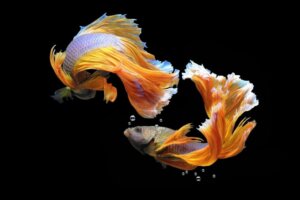

Written and verified by the biologist Cesar Paul Gonzalez Gonzalez
When setting up a new aquarium, it is normal to wonder what types of fish are incompatible. Even if you try your best to recreate the natural ecosystem of the fish inside the tank, not all species adapt to the same conditions. For this reason, it is necessary to select the species well and avoid incompatible fish in an aquarium.
Fish enjoy a lot of space and hiding places in their natural environment, but in a tank they don’t have so much freedom. This causes some of them to not “tolerate” the presence of certain species, so problems begin to arise in their habitat. In this article, we’ll bring you 14 incompatible fish in an aquarium.
Why should I avoid incompatible fish in an aquarium?
As you may know, an important factor for fish that are bred in captivity, is the quality of their habitat. This means that even if they seem to grow well in an environment with poor conditions, they’ll only exhibit their brightest colors if they’re in the best possible conditions. For this reason, if you want your fish to look their best in your aquarium, you must provide them with the best possible companions.
Moreover, the consequences of not checking incompatible fish can be deadly. Surprisingly, many fish species constantly attack their enemies, which often results in death in many cases. By selecting the right specimens, you will prevent your pets from harming each other and you’ll make it easier for them to have a healthy coexistence.
Here are some “couples” that can’t stand each other in an aquarium. Be sure to read on.
Incompatible fish in an aquarium
Oscar fish (Astronotus ocellatus) and neon tetra (Paracheirodon innesi)
The problem between these two ornamental fish is their size. While the Oscar fish reaches 35 centimeters (14 inches) in length, the neon fish is only 4 centimeters (less than 2 inches) This becomes a dilemma because of the voracity of the larger fish, as it tends to eat almost anything that goes near its mouth. For this reason, the Oscar fish, far from living peacefully together, may prefer to feast on the neon tetra.
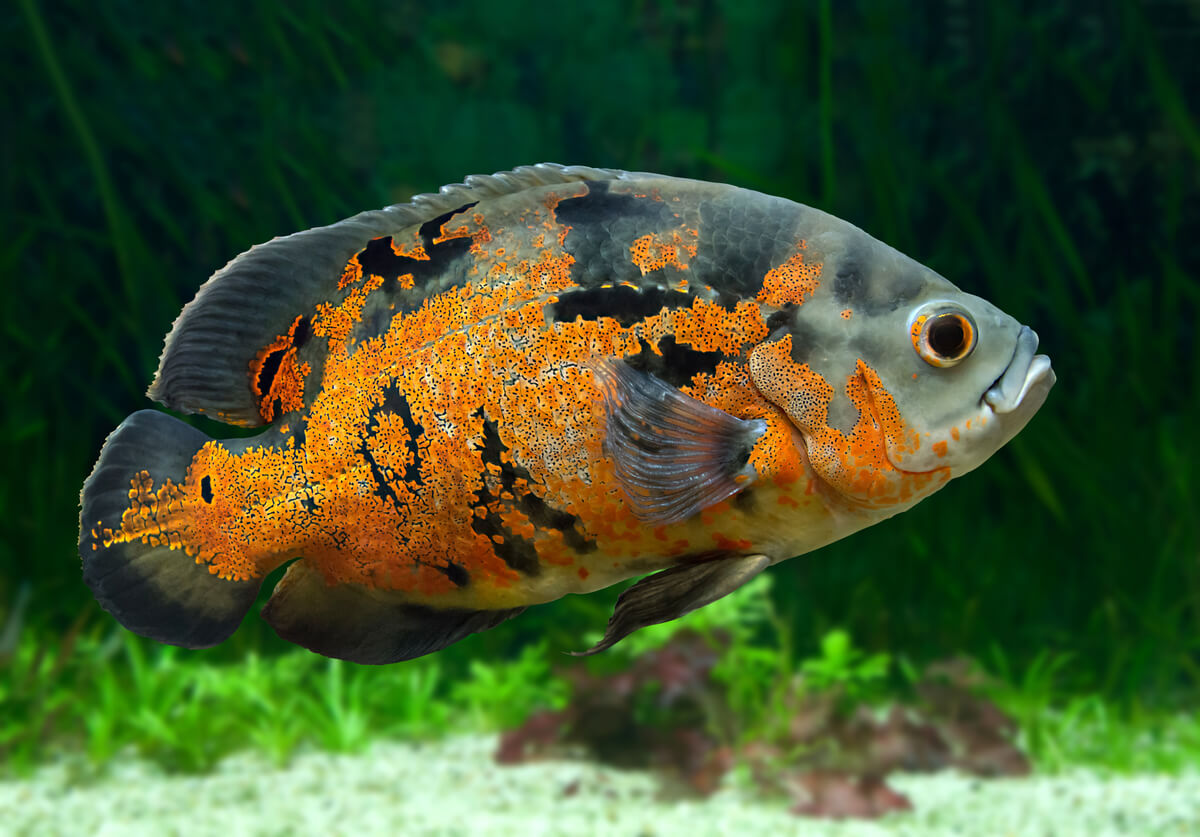
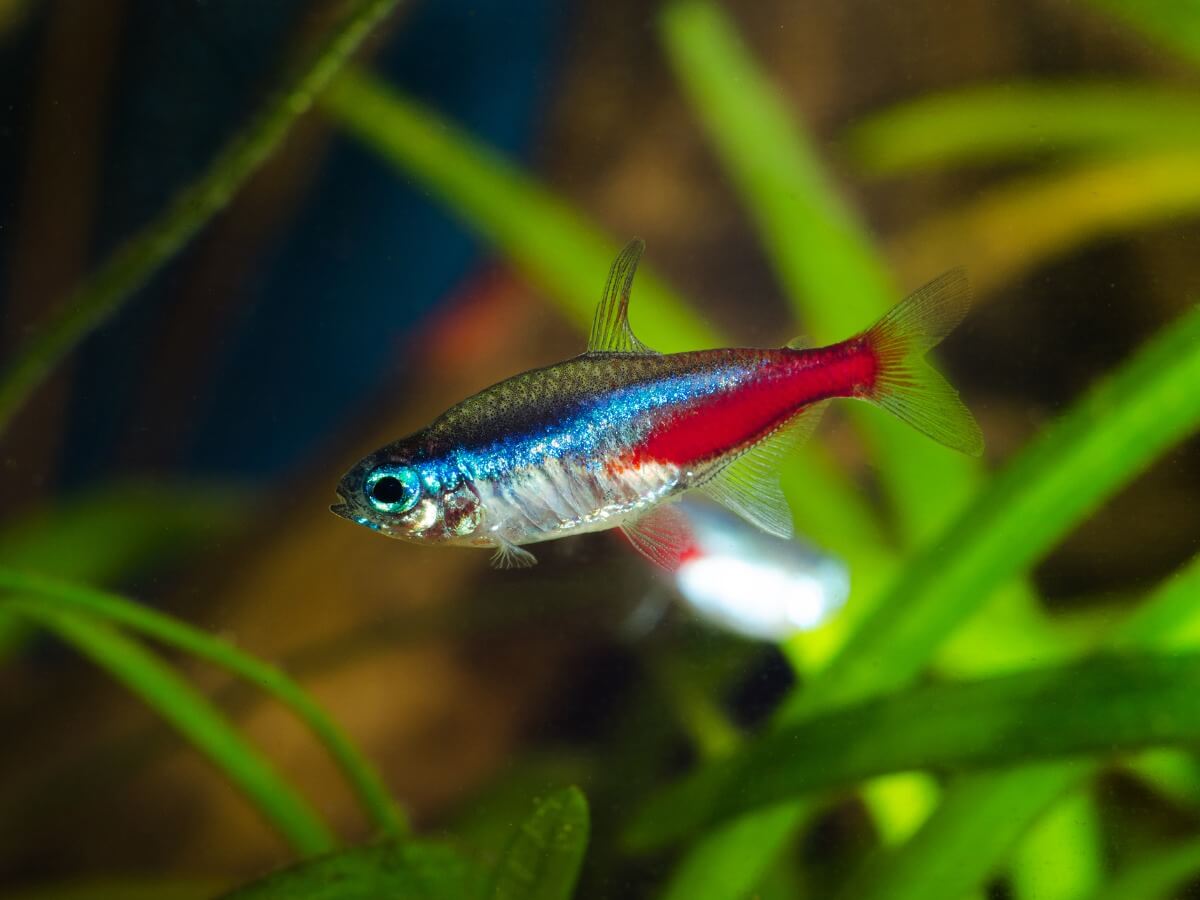
Koi fish (Cyprinus carpio koi) and green swordtail (Xiphophorus helleri)
Koi fish generally represent one of the few species that are incompatible with several other fish. This is because they’re very large, so they’re capable of eating any other unwary fish of smaller size. This situation causes the swordtail fish to be unable to cope with them, as it barely reaches 10 or 15 centimeters (4 to 6 inches) in length.
It’s easy to think that both fish will get on well together, as the water conditions they require are similar. However, the koi fish is known to be highly adaptable and able to withstand almost any type of environment. In other words, it’s an imposing predator that will do whatever it takes to invade any body of water.
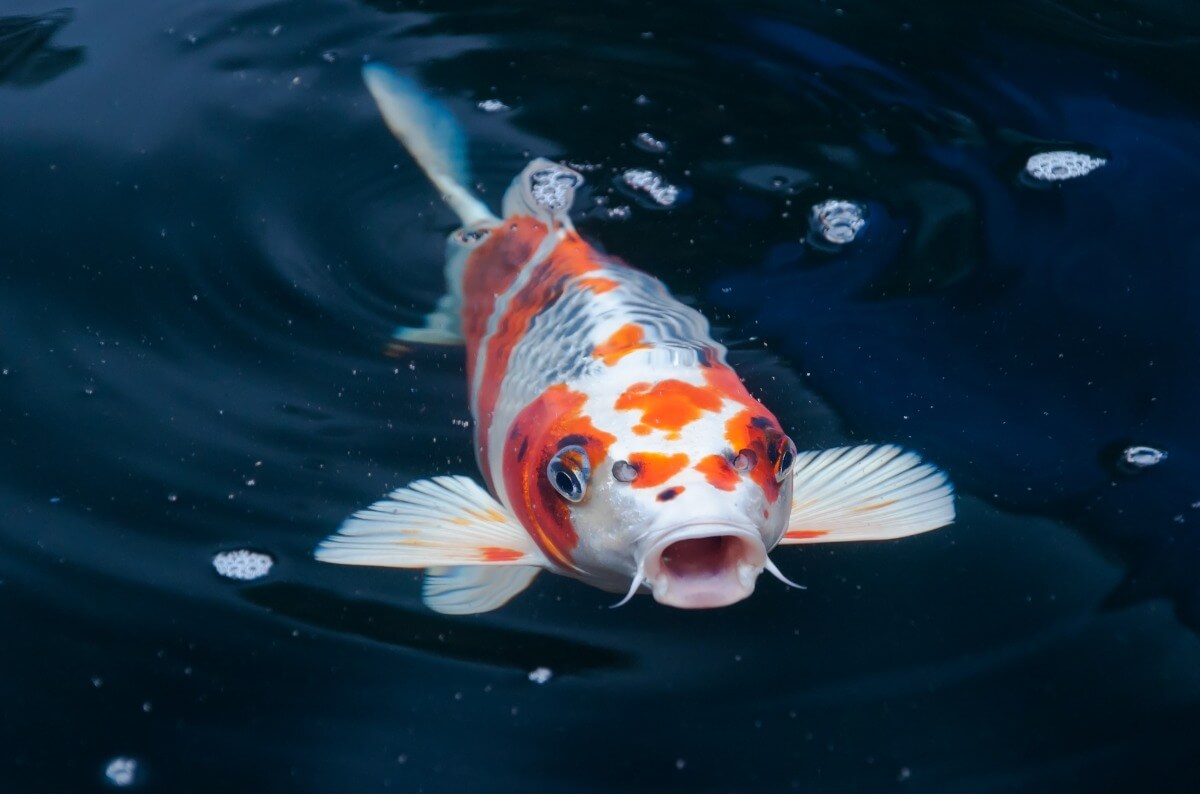
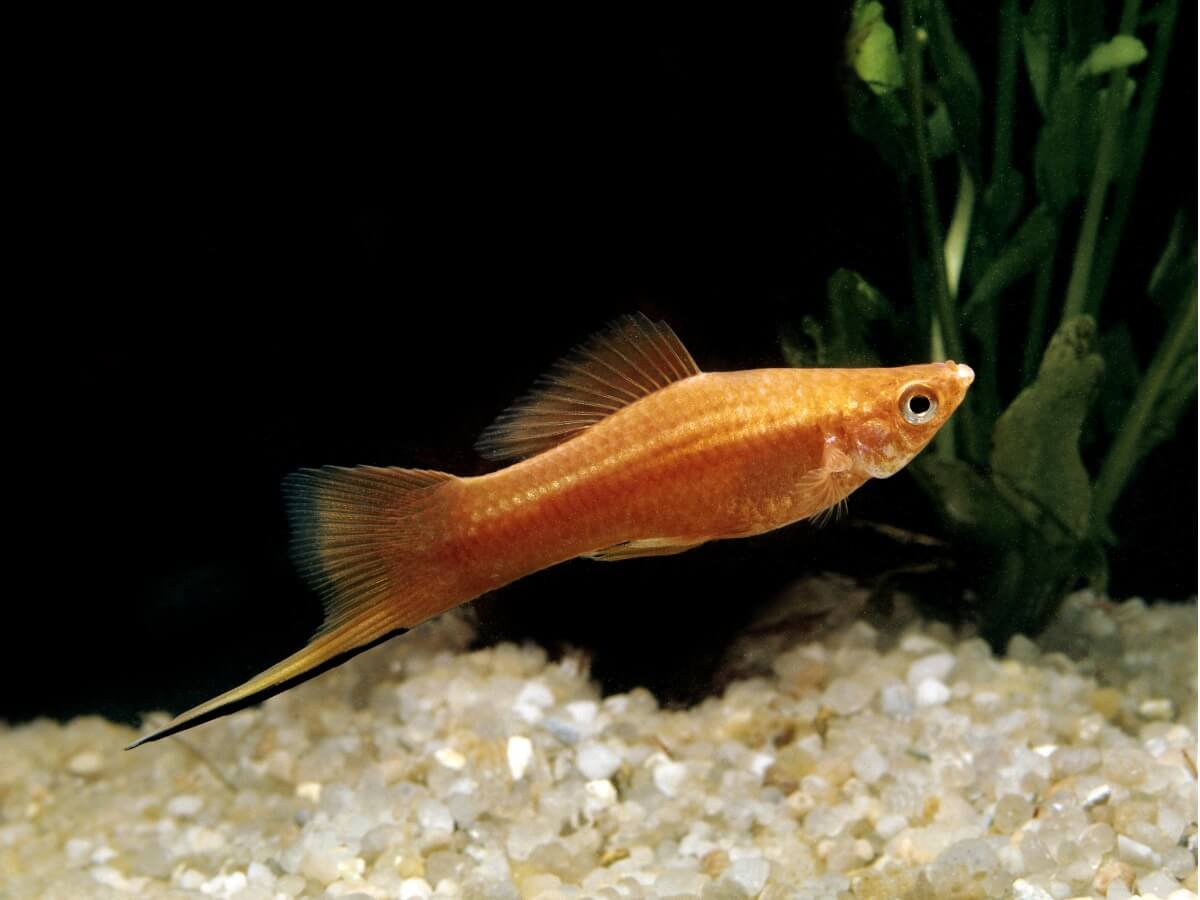
Goldfish (Carassius auratus) and Boeseman’s rainbowfish (Melanotaenia boesemani)
Goldfish are believed to be able to withstand poor conditions in their environment. This includes variations in the temperature of their habitat, as well as pollution that exists within the water. However, these aren’t their natural requirements, as they thrive best in cool temperatures, within a spacious aquarium, and with the right water quality.
In contrast, the Boeseman rainbowfish, which also exhibits beautiful coloration, is a warm-water species that’s very sensitive to tank conditions. Thus, even though it’s possible to force the goldfish to withstand the conditions of the rainbowfish, all that you’ll do is to make it suffer. This means that it isn’t a good idea to keep them together because of their very different requirements.

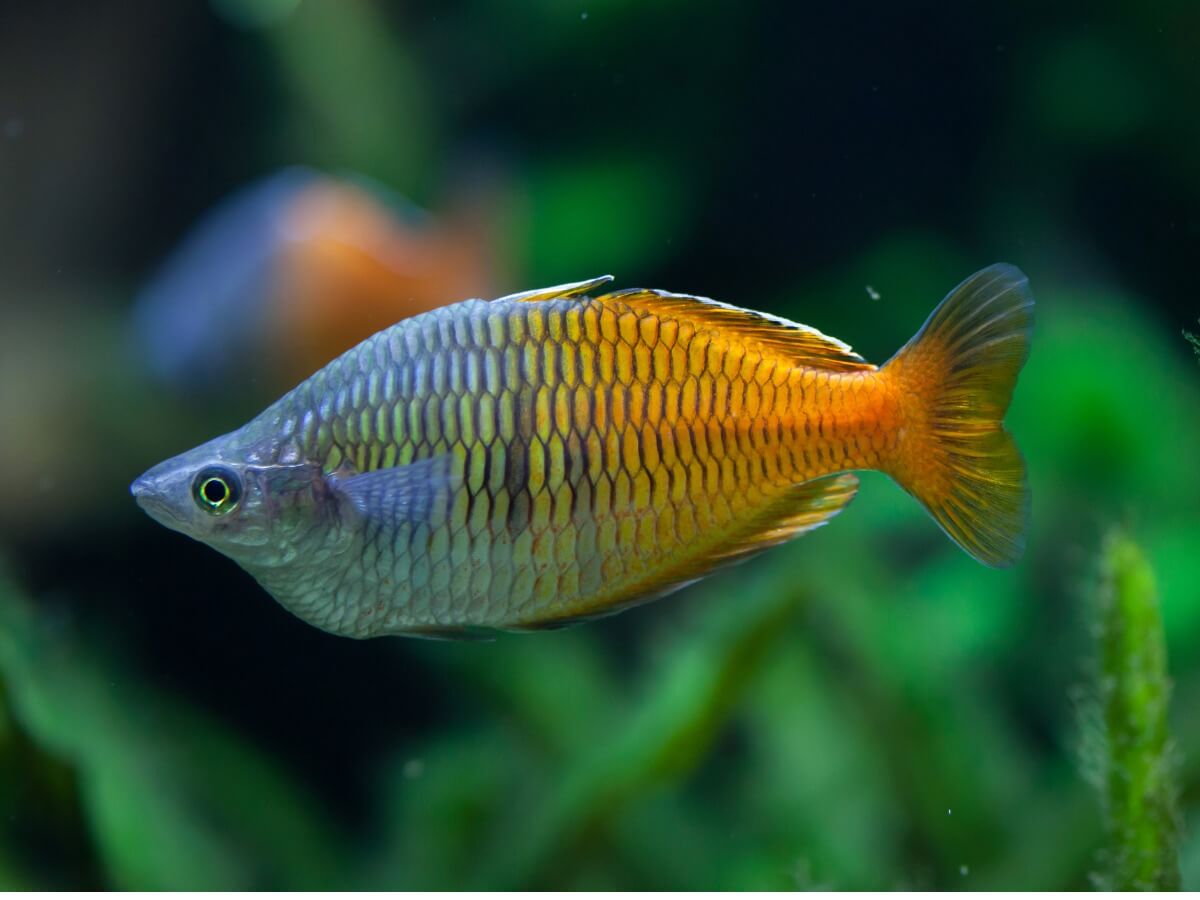
Red discus (Symphysodon discus) and betta fish (Betta splendens)
In general, both betta fish and discus fish share similar water quality requirements. In fact, there are many success stories where both specimens have lived together in the same aquarium. However, you should be careful with this, as both fish are territorial when in a confined space.
If the tank size isn’t large enough, this can lead to conflicts between the fish. Also, keep in mind that, when the breeding season arrives, both species become more aggressive, so they might start fighting even though they have enough space.
Therefore, in order not to have to keep checking the situation, it’s better to avoid putting these fish together to maintain their quality of life.
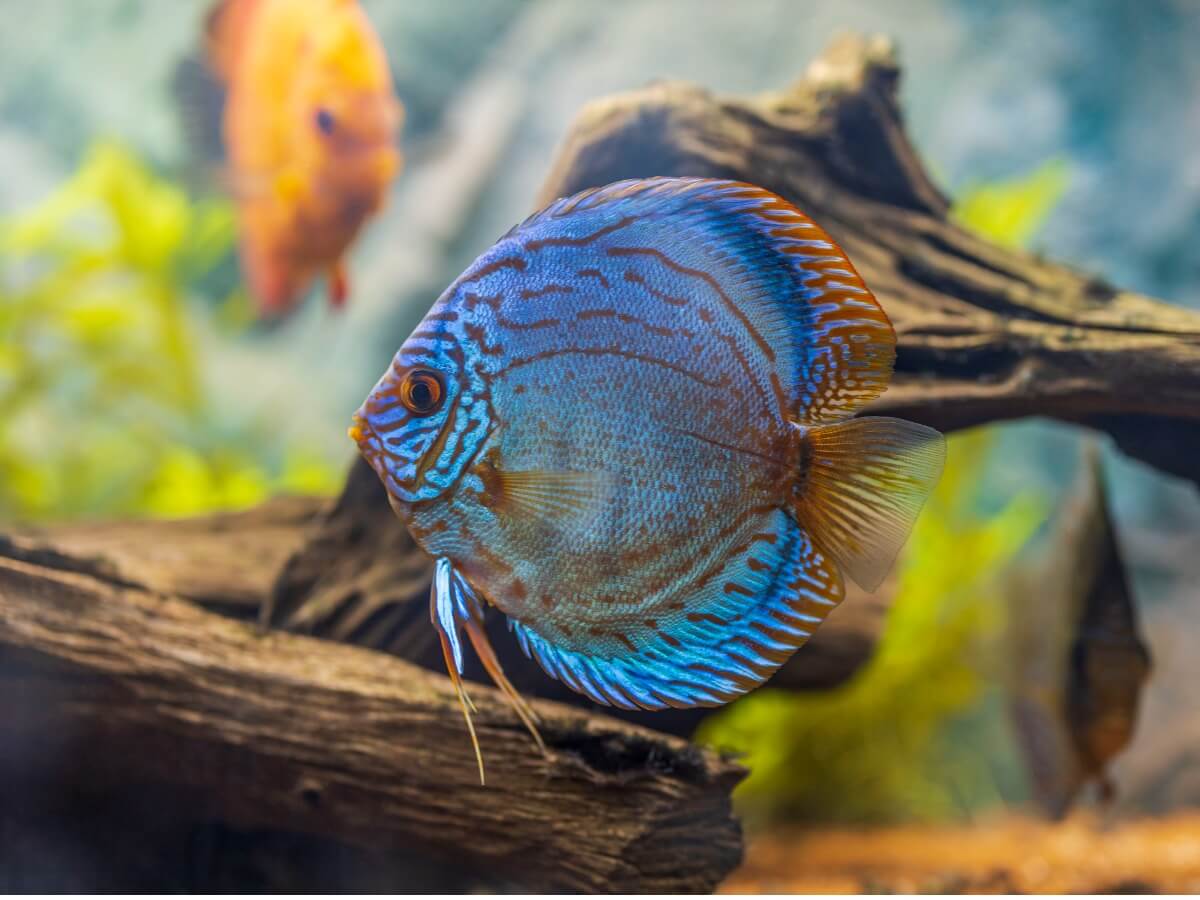
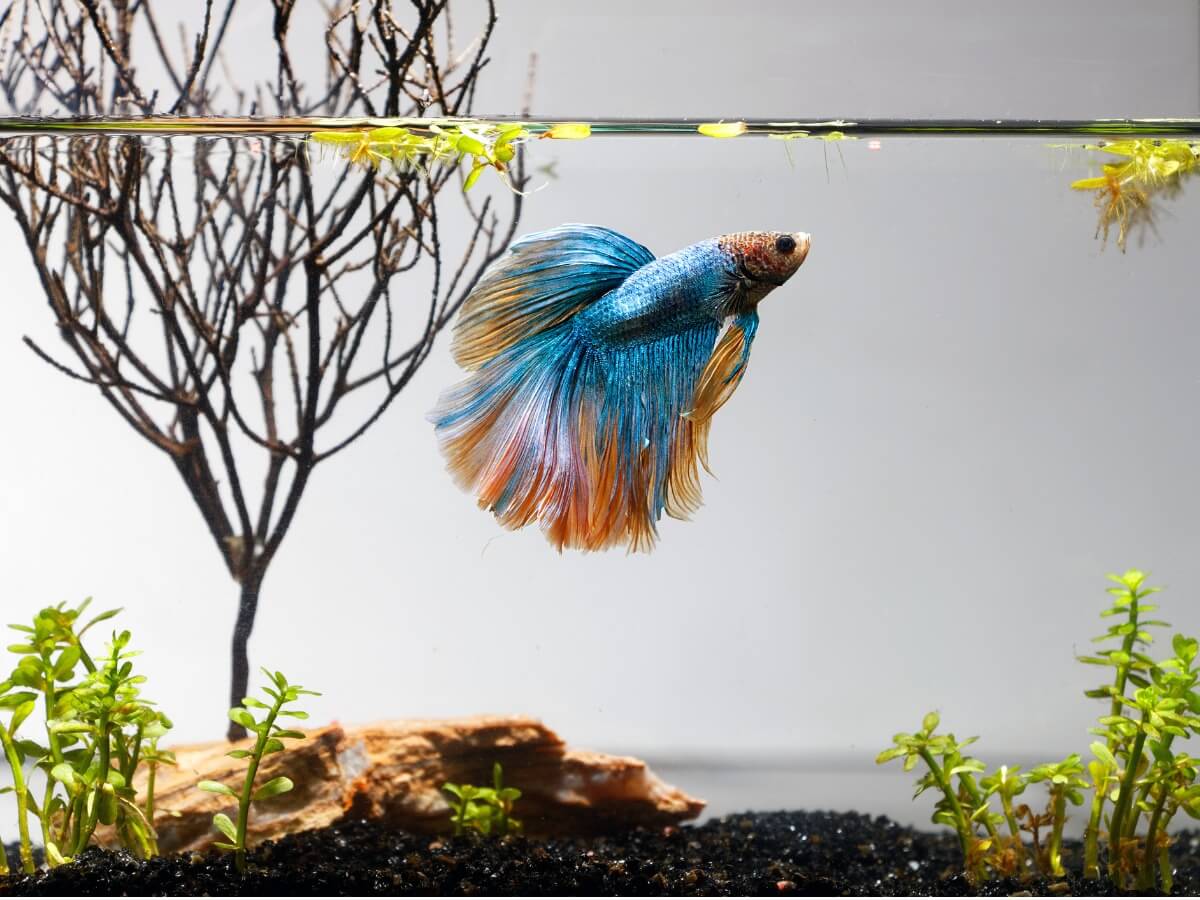
Three spot gourami (Trichogaster trichopterus) and guppy fish (Poecilia reticulata)
In principle, both gouramis and guppies are easy specimens to keep in captivity because of their high resistance to water quality. In fact, it’s likely that, during their first stages of life they’ll be able to coexist without any problems, but as they grow older, friction begins to appear.
The most obvious impediment is the difference in size, as gouramis reach 15 centimeters (6 inches) in length, while guppies only reach 8 centimeters (just over 3 inches) in length. This situation means that the larger fish may eat the smaller ones. However, guppies may also nibble on the gourami’s long fins, which can cause serious injury to the fish.
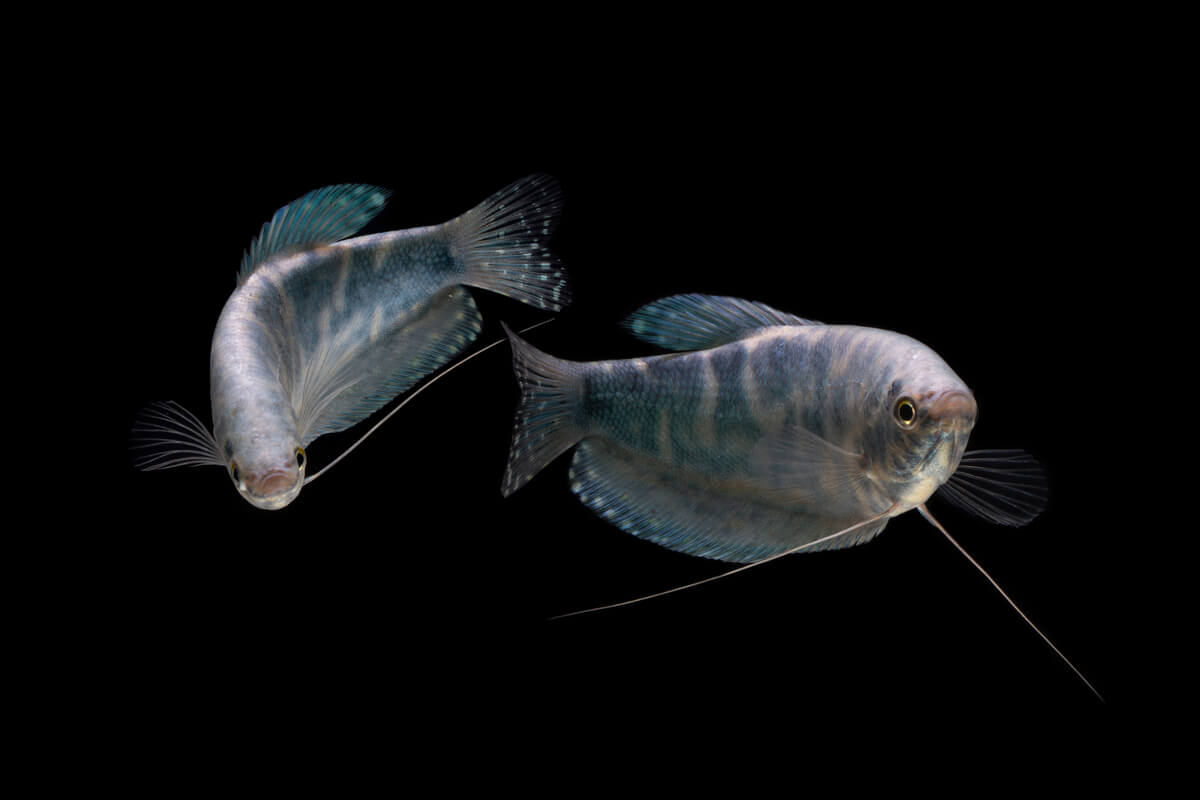
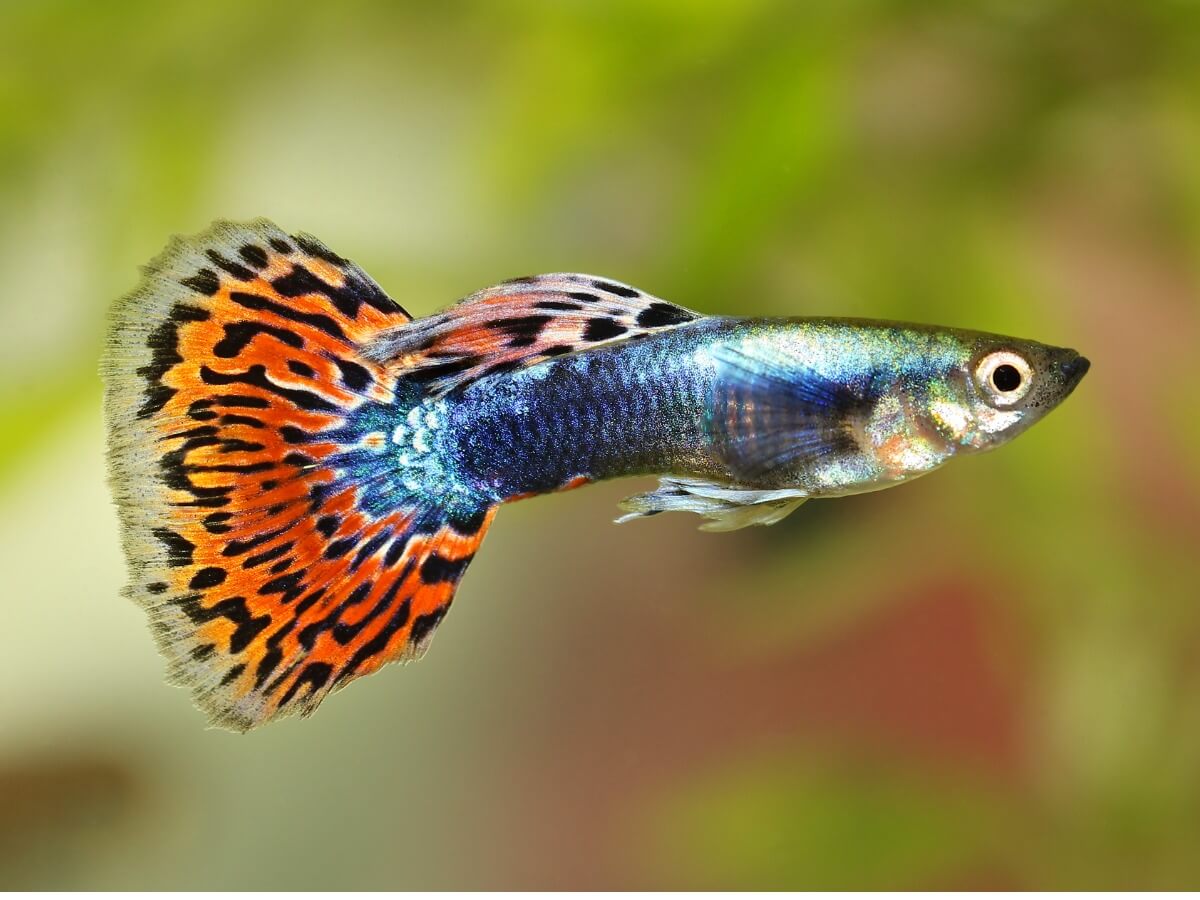
Angelfish (Pterophyllum scalare) and ram cichlid (Mikrogeophagus ramirezi)
Both angelfish and the ram cichlid are beautiful specimens with diverse colors. In fact, both are considered to be quite calm species and able to live well with other fish. However, the problem arises when they’re in their respective breeding seasons, as this is when they become more territorial.
Although they can co-exist well most of the time, they suddenly come into conflict with each other. This doesn’t mean that all specimens cause problems, as it depends on the temperament and breeding of each one. Even so, remember that the outcome of the conflict may end in your fish’s death, so it’s better not to risk it and keep them separated.
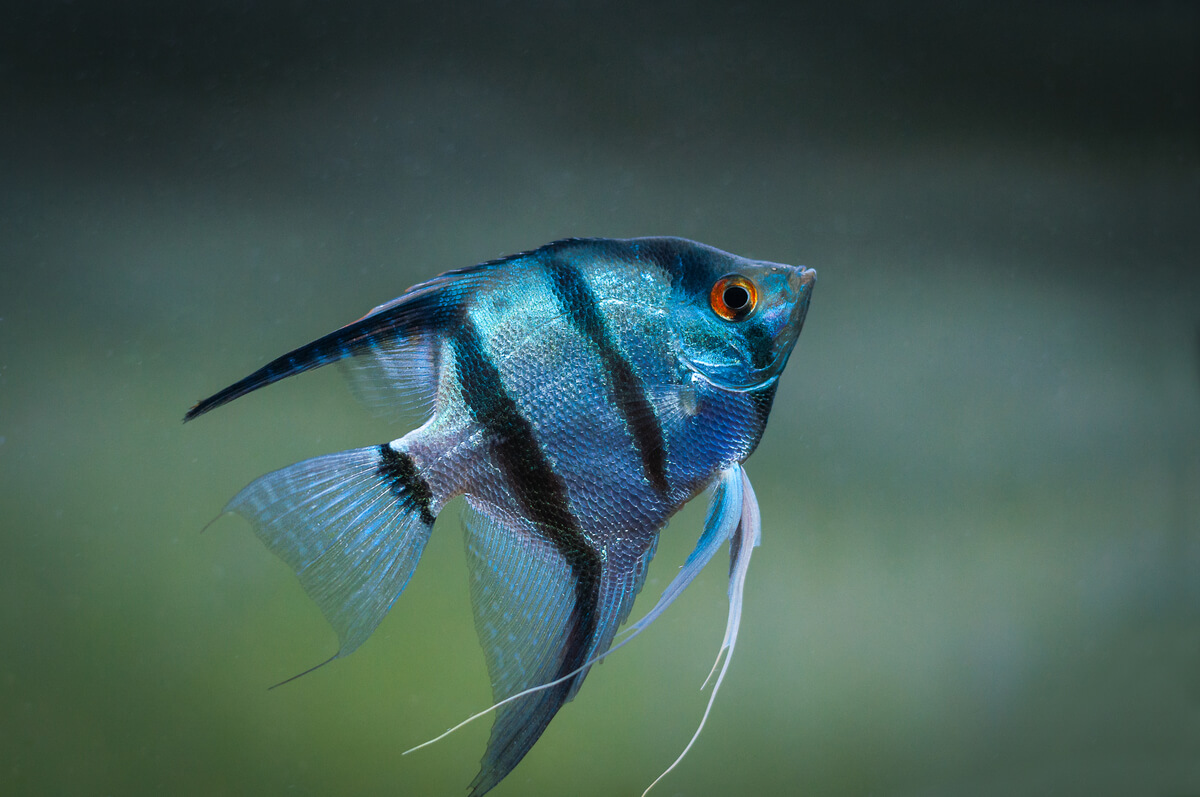
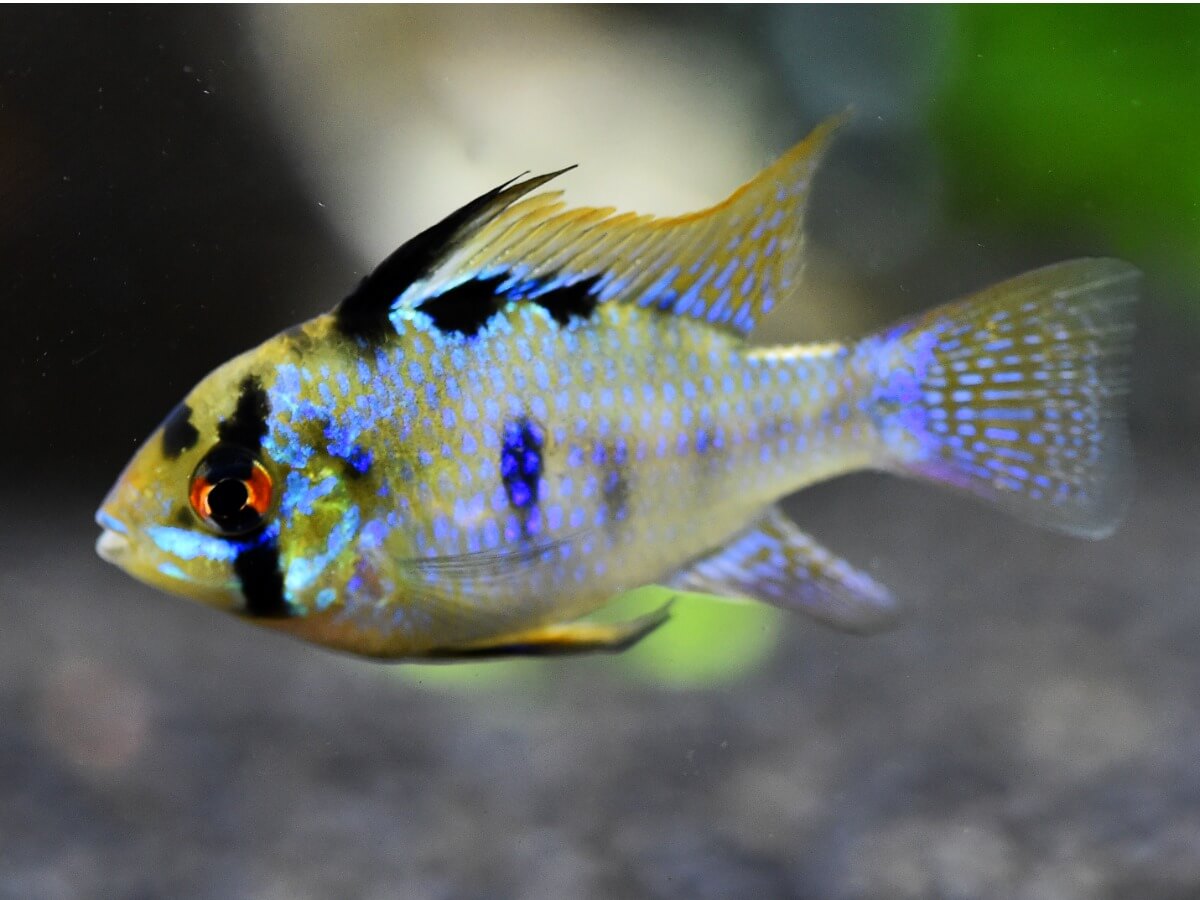
Tiger barb (Puntigrus tetrazona) and Southern platyfish (Xiphophorus maculatus)
Both these species have a great diversity of morphotypes, so they’re usually good choices to keep in the aquarium. However, the tiger barbel is an active fish that swims quite fast, which can disturb other fish. In addition, they also tend to nibble at other fish, which can seriously injure them.
In contrast, platyfish are very peaceful and somewhat shy, which makes them the perfect victims for barbels. Avoid putting these colorful organisms through hell and don’t put them together, as you can be sure that it will end with the death of the platyfish.
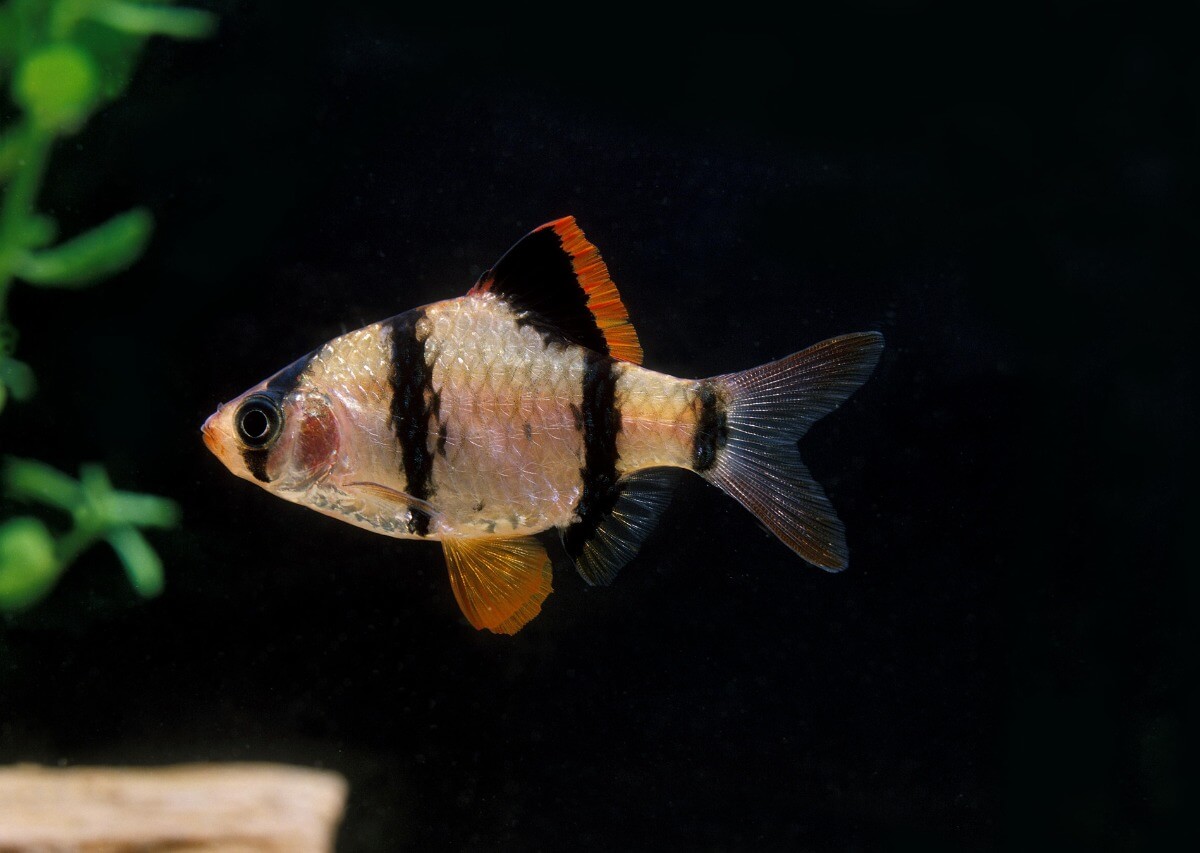
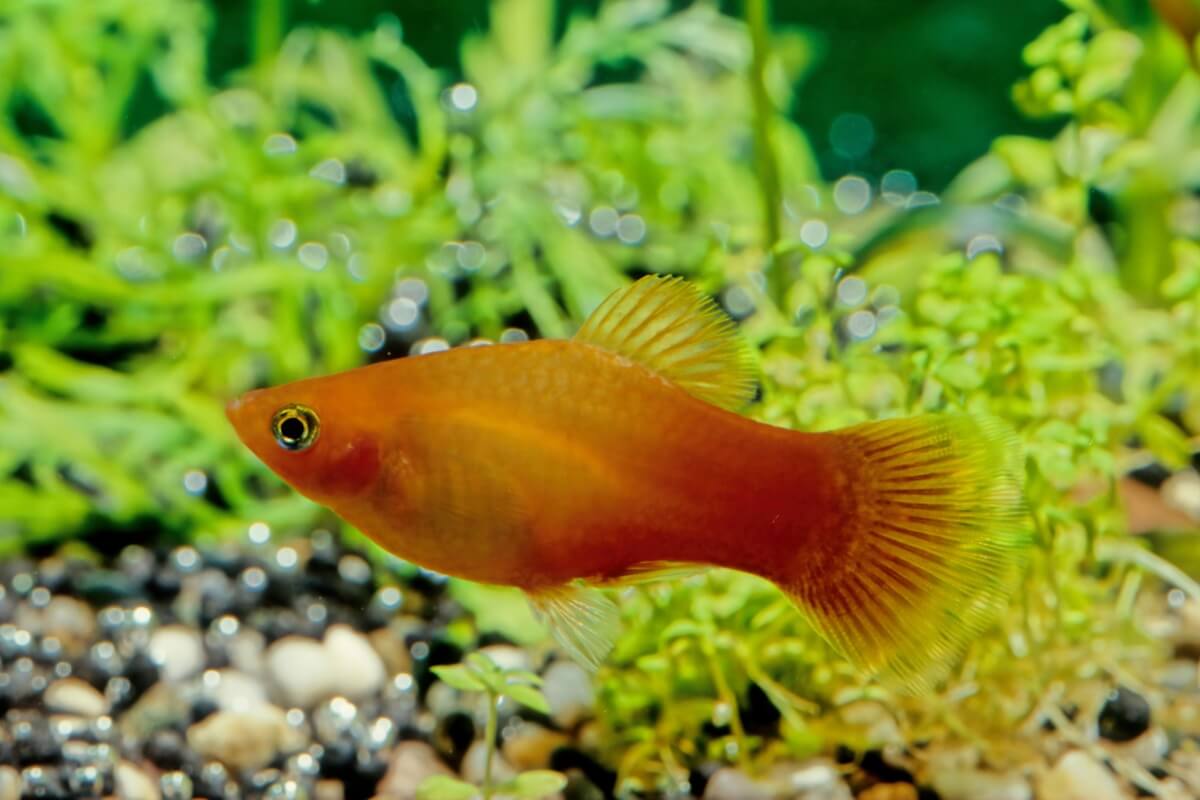
Remember that before bringing a new fish into your aquarium you have to check well to see if it will adapt to the lives of the other fish. In many ways, the health of the fish depends on the relationships they have in their environment, so avoid putting them at risk. Keep in mind that, as they’re your pets, it’s your responsibility to ensure their safety throughout their lives.
When setting up a new aquarium, it is normal to wonder what types of fish are incompatible. Even if you try your best to recreate the natural ecosystem of the fish inside the tank, not all species adapt to the same conditions. For this reason, it is necessary to select the species well and avoid incompatible fish in an aquarium.
Fish enjoy a lot of space and hiding places in their natural environment, but in a tank they don’t have so much freedom. This causes some of them to not “tolerate” the presence of certain species, so problems begin to arise in their habitat. In this article, we’ll bring you 14 incompatible fish in an aquarium.
Why should I avoid incompatible fish in an aquarium?
As you may know, an important factor for fish that are bred in captivity, is the quality of their habitat. This means that even if they seem to grow well in an environment with poor conditions, they’ll only exhibit their brightest colors if they’re in the best possible conditions. For this reason, if you want your fish to look their best in your aquarium, you must provide them with the best possible companions.
Moreover, the consequences of not checking incompatible fish can be deadly. Surprisingly, many fish species constantly attack their enemies, which often results in death in many cases. By selecting the right specimens, you will prevent your pets from harming each other and you’ll make it easier for them to have a healthy coexistence.
Here are some “couples” that can’t stand each other in an aquarium. Be sure to read on.
Incompatible fish in an aquarium
Oscar fish (Astronotus ocellatus) and neon tetra (Paracheirodon innesi)
The problem between these two ornamental fish is their size. While the Oscar fish reaches 35 centimeters (14 inches) in length, the neon fish is only 4 centimeters (less than 2 inches) This becomes a dilemma because of the voracity of the larger fish, as it tends to eat almost anything that goes near its mouth. For this reason, the Oscar fish, far from living peacefully together, may prefer to feast on the neon tetra.


Koi fish (Cyprinus carpio koi) and green swordtail (Xiphophorus helleri)
Koi fish generally represent one of the few species that are incompatible with several other fish. This is because they’re very large, so they’re capable of eating any other unwary fish of smaller size. This situation causes the swordtail fish to be unable to cope with them, as it barely reaches 10 or 15 centimeters (4 to 6 inches) in length.
It’s easy to think that both fish will get on well together, as the water conditions they require are similar. However, the koi fish is known to be highly adaptable and able to withstand almost any type of environment. In other words, it’s an imposing predator that will do whatever it takes to invade any body of water.


Goldfish (Carassius auratus) and Boeseman’s rainbowfish (Melanotaenia boesemani)
Goldfish are believed to be able to withstand poor conditions in their environment. This includes variations in the temperature of their habitat, as well as pollution that exists within the water. However, these aren’t their natural requirements, as they thrive best in cool temperatures, within a spacious aquarium, and with the right water quality.
In contrast, the Boeseman rainbowfish, which also exhibits beautiful coloration, is a warm-water species that’s very sensitive to tank conditions. Thus, even though it’s possible to force the goldfish to withstand the conditions of the rainbowfish, all that you’ll do is to make it suffer. This means that it isn’t a good idea to keep them together because of their very different requirements.


Red discus (Symphysodon discus) and betta fish (Betta splendens)
In general, both betta fish and discus fish share similar water quality requirements. In fact, there are many success stories where both specimens have lived together in the same aquarium. However, you should be careful with this, as both fish are territorial when in a confined space.
If the tank size isn’t large enough, this can lead to conflicts between the fish. Also, keep in mind that, when the breeding season arrives, both species become more aggressive, so they might start fighting even though they have enough space.
Therefore, in order not to have to keep checking the situation, it’s better to avoid putting these fish together to maintain their quality of life.


Three spot gourami (Trichogaster trichopterus) and guppy fish (Poecilia reticulata)
In principle, both gouramis and guppies are easy specimens to keep in captivity because of their high resistance to water quality. In fact, it’s likely that, during their first stages of life they’ll be able to coexist without any problems, but as they grow older, friction begins to appear.
The most obvious impediment is the difference in size, as gouramis reach 15 centimeters (6 inches) in length, while guppies only reach 8 centimeters (just over 3 inches) in length. This situation means that the larger fish may eat the smaller ones. However, guppies may also nibble on the gourami’s long fins, which can cause serious injury to the fish.


Angelfish (Pterophyllum scalare) and ram cichlid (Mikrogeophagus ramirezi)
Both angelfish and the ram cichlid are beautiful specimens with diverse colors. In fact, both are considered to be quite calm species and able to live well with other fish. However, the problem arises when they’re in their respective breeding seasons, as this is when they become more territorial.
Although they can co-exist well most of the time, they suddenly come into conflict with each other. This doesn’t mean that all specimens cause problems, as it depends on the temperament and breeding of each one. Even so, remember that the outcome of the conflict may end in your fish’s death, so it’s better not to risk it and keep them separated.


Tiger barb (Puntigrus tetrazona) and Southern platyfish (Xiphophorus maculatus)
Both these species have a great diversity of morphotypes, so they’re usually good choices to keep in the aquarium. However, the tiger barbel is an active fish that swims quite fast, which can disturb other fish. In addition, they also tend to nibble at other fish, which can seriously injure them.
In contrast, platyfish are very peaceful and somewhat shy, which makes them the perfect victims for barbels. Avoid putting these colorful organisms through hell and don’t put them together, as you can be sure that it will end with the death of the platyfish.


Remember that before bringing a new fish into your aquarium you have to check well to see if it will adapt to the lives of the other fish. In many ways, the health of the fish depends on the relationships they have in their environment, so avoid putting them at risk. Keep in mind that, as they’re your pets, it’s your responsibility to ensure their safety throughout their lives.
All cited sources were thoroughly reviewed by our team to ensure their quality, reliability, currency, and validity. The bibliography of this article was considered reliable and of academic or scientific accuracy.
- Castro-Castellón, A. E., Castro-Mejía, G., Castro-Mejía, J., Monroy-Dosta, M. C., & Martínez-Meingüer, A. M. (2020). Determination of weight and length gain of Astronotus ocellatus (Agassiz, 1831) in a Biofloc system with a pigment-rich diet.
- Mohammadi, M., & Jafari, S. (2014). An expert system for recommending suitable ornamental fish addition to an aquarium based on aquarium condition. arXiv preprint arXiv:1405.1524.
- Livengood, E. J., & Chapman, F. A. (2007). The ornamental fish trade: An introduction with perspectives for responsible aquarium fish ownership. EDIS, 2007(16).
- Reebs, S. (2018). Fish Behavior in the Aquarium and in the Wild. Cornell University Press.
- Watson, C. A., & Shireman, J. V. (1996). Production of ornamental aquarium fish. University of Florida Cooperative Extension Service, Institute of Food and Agriculture Sciences, EDIS.
This text is provided for informational purposes only and does not replace consultation with a professional. If in doubt, consult your specialist.








